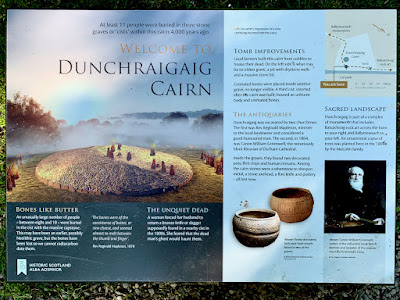In 2020 Hamish Fenton announced the discovery of the carvings on the underside of the cairn’s massive capstone, 4 meters in length and est. 5 tons. A 2022 paper wonderfully titled, Revealing the Earliest Animal Engravings in Scotland: The Dunchraigaig Deer, Kilmartin, documents and investigates the context and implications. (Below digital 3-D scan)
“Although clearly representational, the deer carvings at Dunchraigaig are nevertheless as ambiguous as the abstract cup-and-ring motifs in this area. Their meaning and purpose are as obscured and restricted to us as their physical location within the cist.” Revealing, 2022
“The discovery also reinforces the special character of Kilmartin Glen as one of the most original and remarkable Neolithic–Bronze Age landscapes of monumentality and rock art in Britain.” Revealing, 2022.
Below, schematic of carvings which the study determined were made on the stone sometime before placed as the cairn capstone.

Deer carvings are rare among the thousands of petroglyphs in the Northern Great Basin. Pictured below, three who have encountered me traipsing in basalt-rimmed sage-lands of southern Oregon. As imaging and imagining, compare or align with the Kilmartin deer carvings. How do you see?
NOTES & LINKS
— Revealing the Earliest Animal Engravings in Scotland: The Dunchraigaig Deer, Kilmartin. The 2022 study by Joana Valdez-Tullett and Tertia Barnett and team from Scotland’s Rock Art Project
— Prehistoric animal carvings discovered for the first time in Scotland. May 2021 New release with links to images of digital scans.
— Dunchraigaig: Cairn (Bronze Age), Carved Stone (Prehistoric)
— An Animate Landscape: Rock Art and the Prehistory of Kilmartin, Argyll, Scotland (2011). Andrew Meirion Jones and team.
“The Kilmartin landscape in western Scotland is widely regarded as Scotland's richest prehistoric landscape. It contains a number of barrow cemeteries, stone alignments, stone circles and a henge. With over 250 individual rock art sites, it also has the greatest concentration of prehistoric rock art in the British Isles and some of the most impressive rock art sites.”












.jpeg)
.jpeg)
